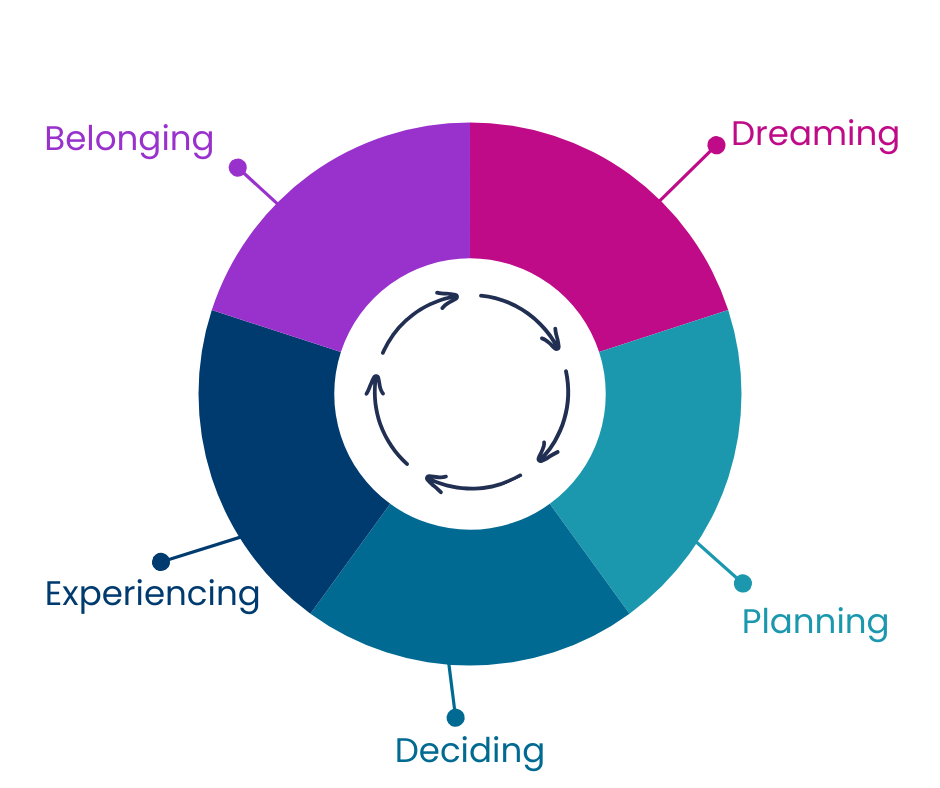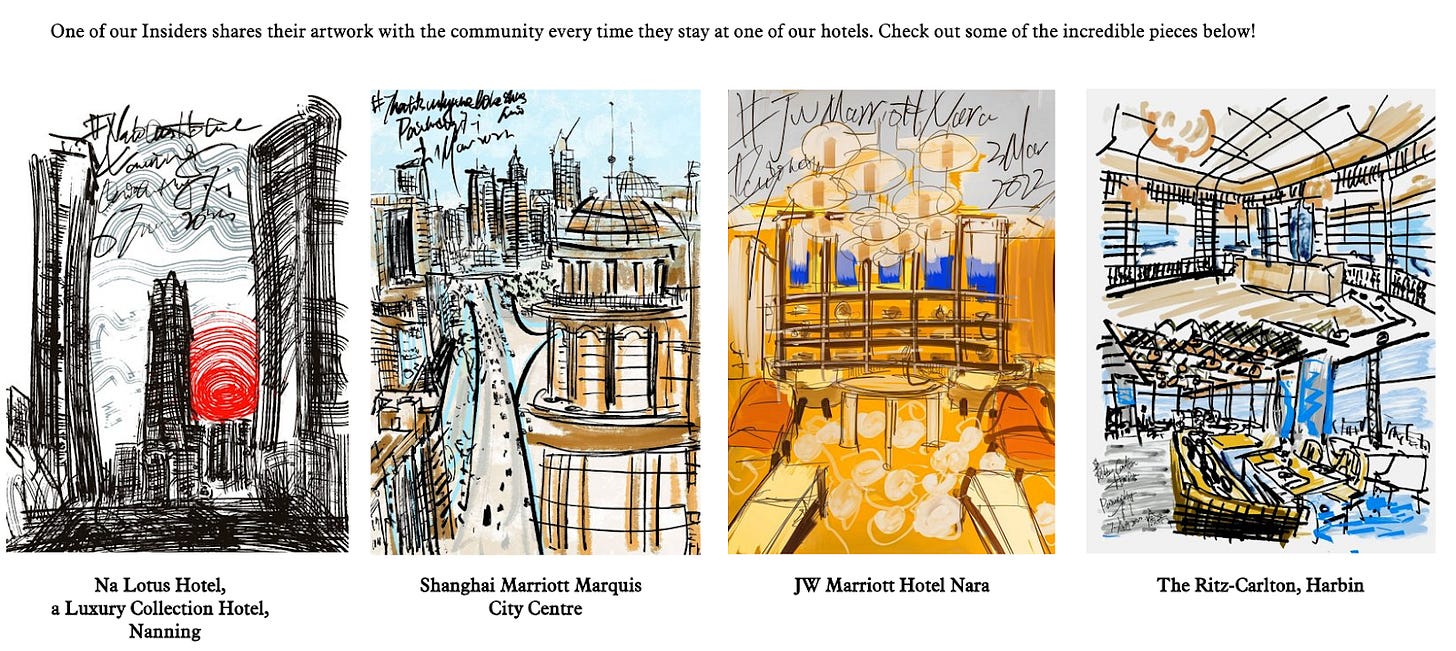📌 What Strong Hospitality Brand Communities Actually Look Like
Build Brand Communities That Last
🌞 Welcome to this Week's Newsletter
Most hospitality brands think they’ve built a community. What they’ve built is a following. That distinction costs them loyalty. Because when the algorithm shifts or the content dries up, only one thing keeps buyers returning: identity.
According to Community Roundtable, 85% of community builders report that branded communities improve the customer journey and increase trust.
A real community reflects, rewards, and quietly deepens itself over time. But few brands are measuring the right signals or designing for the right outcomes.
On the Menu this week
Why most brand ‘communities’ are broadcast platforms in disguise
How identity loops and behavioural design build real loyalty
Practical tactics to manage, moderate, and revive engagement
The psychology behind quiet participation and invisible value
How to stop chasing followers and start engineering belonging
For VIPS - 🧰 Brand Community Readiness Scorecard
Let’s Check In ☕
The strongest brand communities are designed strategically.
Join the VIP Lounge for practical strategy on
building loyalty through rhythm, return, and recognition.
💬 From Audience to Alignment
Most brands are still measuring community by headcount, not heartbeat, and that’s a mistake!
A following is passive. A community is active. One consumes, the other contributes. Yet too many strategies are still built around audience size, ignoring the metrics that actually indicate trust: participation, return visits, private shares, and meaningful replies. Few brands position around belonging as a core metric. That’s a missed opportunity.
A social media account can inform, and a newsletter can inspire. However, only a well-designed community can make someone feel part of the brand. 58% of hospitality brands maintain online and in-person communities, linking digital platforms with real-world experiences.
“Loyalty now hinges on delivering differentiated experiences beyond monetary value, including personalised perks, content and partnerships that cultivate community.”
🚀 Community Drivers
In hospitality, a branded community allows prospective guests to observe, ask, and connect before committing. It creates social proof in real time. And it extends the guest's journey long after the purchase.
Hospitality Buyer Journey
💖 Belonging is the Emotional Driver of Loyalty
Guests aren’t looking for content, they’re looking for connection. They want to be noticed. Remembered. Answered. Loyalty isn’t earned through perks. It’s earned through presence and participation.
For Gen Z and younger Millennials, prestige means connection, not hierarchy. They value access only when it feels earned by behaviour, not bought by spending. Brand communities are the best way to deliver that.
When a brand replies, remembers, nudges, or recognises, loyalty follows. Access feels like recognition, not a transaction, which turns tiers into trust signals. To make that work, brands must shift how they engage.
📈 Brand Community Business Impact
When brand communities are effectively designed and managed, they yield measurable business benefits:
Self-service resources and community forums can lead to a significant decrease in support ticket volumes. Zendesk has reported that support tickets reduce by up to 25% when customers are empowered to find answers independently from peer answers, pinned resources, and search-friendly threads.
According to McKinsey, companies that personalise engagement and build emotional connection see 20% higher customer satisfaction scores and more frequent return behaviours.
Bain & Company found that improving customer retention by just 5% can lead to profit increases in excess of 25%, especially in sectors where repeat visits drive margin.
📉 Not Every Brand Is Ready for a Community
Before launching, ask, Is your brand truly equipped to host a guest-facing community?
Without a clear purpose, behavioural design, and tone control, communities quickly turn into echo chambers. The risks? Drained resources, off-brand interactions, or fractured trust.
Brands with no experiential layer or marketing teams without bandwidth to model tone and rhythm should pause. A community isn’t a shortcut to sales. It’s a loyalty engine. And like any engine, it fails without structure.
If your model doesn’t reflect member identity, reward quiet behaviour, and offer clear value, even the best platform won’t perform.
🧰 Use the Community Readiness Scorecard to test your strategy before you invest. 📥 VIP Members can download the scorecard inside the Lounge 👇
📊 Engagement Has Shifted from Broadcast to Dialogue
One-way messaging still dominates hospitality channels. And that’s a problem. It might inform in the moment, but it doesn’t create memory, investment, or momentum. When guests become viewers instead of participants, they have no reason to act.
Today's most effective brand engagement comes from dialogue: Q&A sessions, user-generated content, chef interactions, and local guide tips. When guests co-author the narrative, it becomes part of their identity. Co-creation moments tap into a cognitive bias known as the “IKEA effect,” where people assign more value to experiences they’ve helped create. It’s a form of self-investment.
🔄 Human Identity Loops vs Brand Logic
What holds a community together isn’t content. It’s a shared identity. Think of a guest who always shares the same cocktail photo or books the same room each visit. That’s an identity loop, and the best brand communities reflect it.
Human identity loops are internal frameworks shaped by neurotype, cultural context, and emotional needs.
Neurotypes define how someone’s brain processes emotion, information, and interaction. A neurodivergent guest might prefer written content to video, or private notes over public replies. When your community engagement respects that, loyalty follows. Yet most brand communities are built using brand logic. They’re designed to manage users, not evolve people. That’s the flaw.
If your community structure only rewards purchases or time spent, it’s missing the point. Loyalty is earned when people feel the brand helps them become who they want to be. The brain rewards spaces that match its internal model through dopamine (the feel-good hormone), memory, and a lowered threat response.
To brief your team, map identity triggers (e.g. memory, repetition, recognition) into your content calendar. Assign formats to match neurotypes, short-form video for sensory seekers, long-reads for deep thinkers, informative posts for lurkers, DM responses for reassurance-seekers. Each post should align with at least one guest processing preference.
Don’t design content and campaigns around products and offers. Design around transformation. That’s what builds emotional loyalty. According to Gainsight, brands with strong community initiatives consistently outperform on Net Promoter Scores and retention. The communities that thrive act as mirrors. They reflect identity, generate momentum, and help members feel like they’re evolving.
So what does that look like in practice? Let’s move from concept to construct.
If you're serious about building a brand that people return to, the VIP Lounge is where it happens. I share the strategies that shift behaviour, how to hold attention, shape engagement, and design loyalty that lasts.
👥 What Successful Brand Communities Look Like
Most brand spaces aren’t communities, they’re broadcast platforms. But when communities are built and managed properly, something else takes shape. These spaces stop acting like another feed and start behaving like an ecosystem.
A brand community can exist in any digital space where customers or guests interact with each other and the brand outside traditional support channels. This might be a private Facebook Group, a gated WhatsApp thread, a branded forum, or a members-only area embedded within your site.
Inside an authentic brand community, guests participate. That might mean telling stories, asking for tips, or commenting on an upcoming event. But often, it means nothing visible at all, reading, saving, returning, watching closely to see if this brand still aligns with who they are.
That behaviour isn’t passive. It’s deliberate, quiet engagement.
The best content is posts that invite guests to share memories, ask for local tips, vote on seasonal dishes, or get early access to events. Behind-the-scenes peeks, nostalgic throwbacks, and simple questions like “What should we bring back next season?” consistently prompt meaningful engagement.
Marriott’s Bonvoy Insiders group is a useful case study. What began as a loyalty perk now functions as an active engagement layer, blending social platforms with peer connection and gated content. What they measure isn’t how many people follow the page. It’s how many return, how many post, and how many participate in real ways.
Metrics like monthly active users, post frequency per member, and event engagement are now baseline indicators. Customer participation has overtaken audience size as the leading success signal.
An authentic brand community doesn’t ask ‘How many followers?’ It asks:
How often do members return?
How many contribute without prompting?
How many shift from browsers to believers?
🗝️ Join Me in the VIP Lounge 🔒
In the VIP Lounge, we go deeper into retention architecture, moderation workflows, identity-based content, and recovery tactics when communities go quiet. You’ll also get access to member-only comments where you can ask direct questions and get practical, experience-based answers.
Inside the VIP Lounge:
How to build identity-based loyalty systems
Moderation tactics for quiet, high-value members
Recovery strategies when your community goes silent
Designing digital spaces that mirror guest psychology
Practical tools for rhythm, retention and recognition
🧰 Brand Community Readiness Scorecard - VIP Tool
🧩 Understanding Community Dynamics
Keep reading with a 7-day free trial
Subscribe to Hospitality Marketing Insight to keep reading this post and get 7 days of free access to the full post archives.






